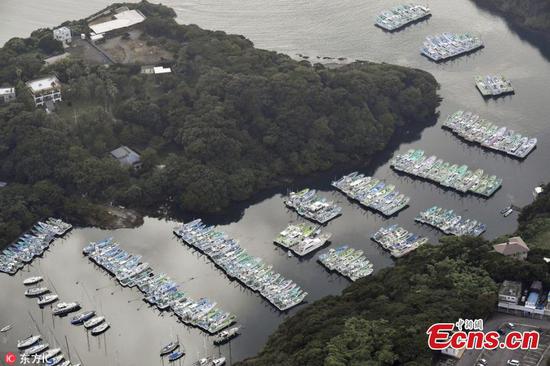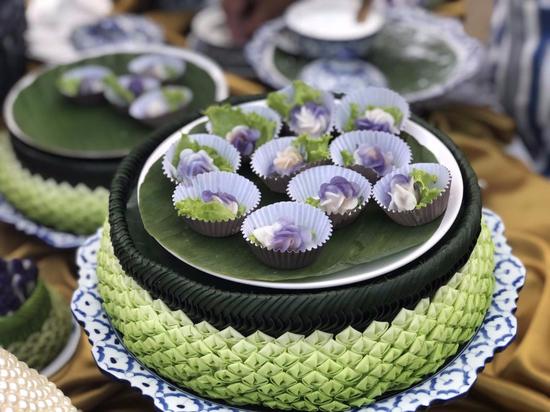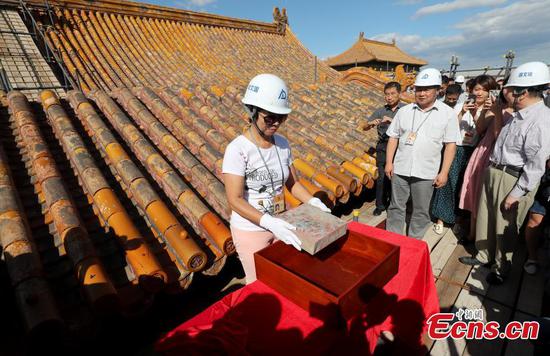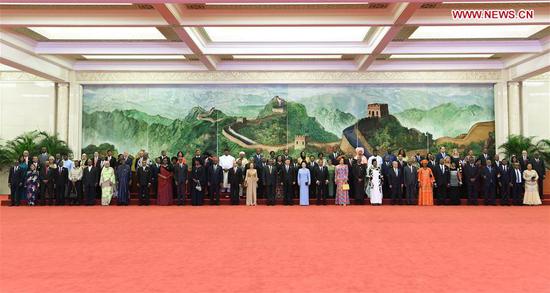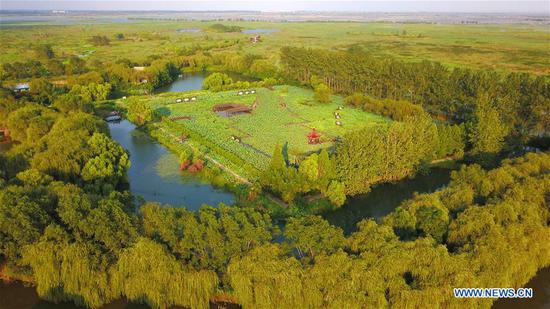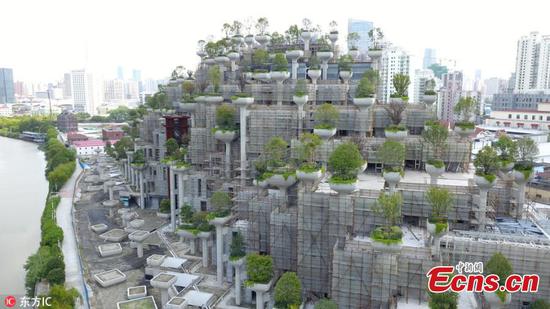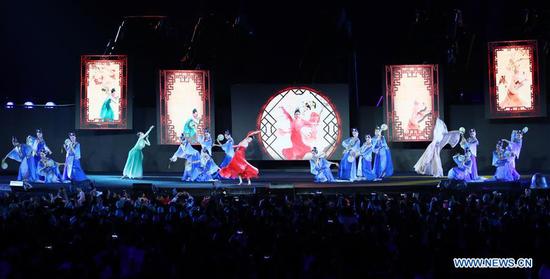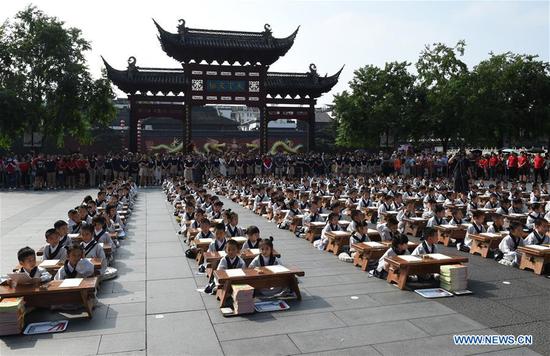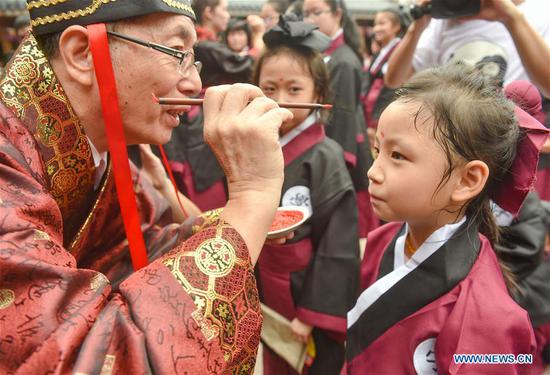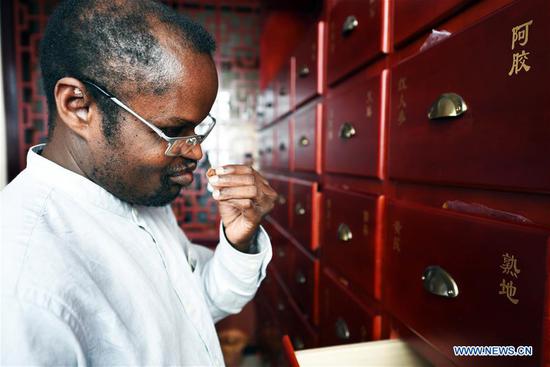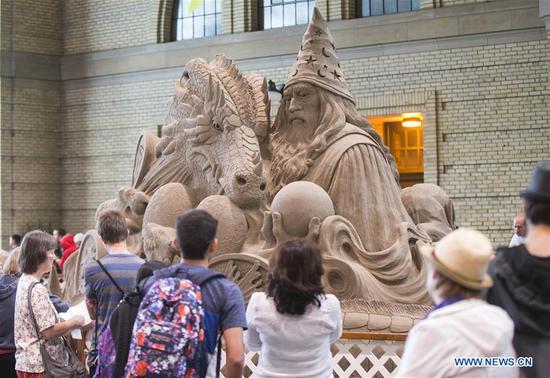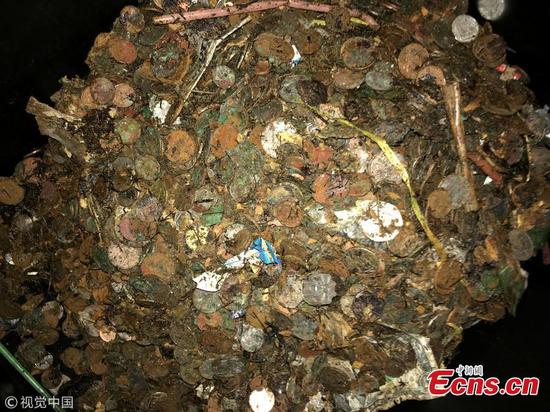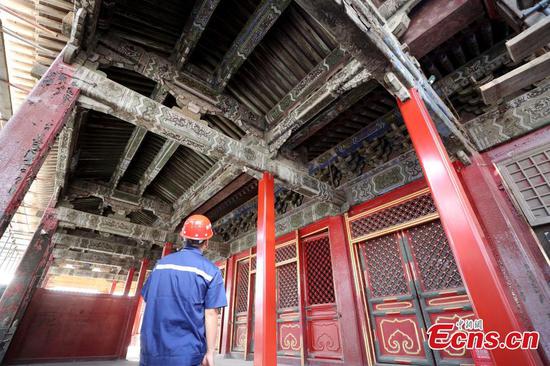
After preparing for two years, the research project into the restoration and conservation of The Hall of Mental Cultivation was launched on September 3, 2018 at the Palace Museum. (Photo: China News Service/Zhang Yu)
Yangxin Dian, or the Hall of Mental Cultivation in the Forbidden City, officially started its research protection project on Monday, featuring research into the maintenance process itself.
During the launch ceremony, Shan Jixiang, curator of the Palace Museum, and Zheng Xinmiao, head of the research institute of the Palace Museum, climbed onto the roof of the Yangxin Dian and took out a treasure box at the main ridge of the roof together.
The treasure box was then handed over to Xu Chaoying, a research fellow of the ancient architecture department of the museum. The handing over ceremony marked the official start of renovation work at the former residence of eight Qing Dynasty (1644-1911) emperors.
According to Shan, the treasure box was the first discovered painted treasure box in the Forbidden City. The treasure box is made of tin and oblate in square shape. Colored drawing of azure dragon (qing long) can be clearly seen on the surface of the box and it also shows the inscription of the year "the sixth year of Emperor Jiaqing's reign (1801)".
The main architectures in the Forbidden City all have treasure boxes, which were placed in the ridge cylinder in the center of the main ridge on the roof as an item to suppress the evil. Traditionally, when placing the treasure box, a ceremony would be held during ancient times to pray for safety. The treasure box was usually made of copper, tin or wood, and contained many things inside, including scriptures, coins, shoe-shaped ingots in five materials of gold, silver, copper, iron, and tin, gems in five colors, satins in five colors, silk threads in five colors, five spices, five medicines and five cereals.
According to the museum, the repair covers 7,707 square meters, and the building area is around 2,540 square meters. A total of 13 historic buildings and their affiliated glass doors and wooden screen walls will be repaired. The maintenance project is scheduled to finish in 2020, when the Forbidden City celebrates its 600th anniversary.









